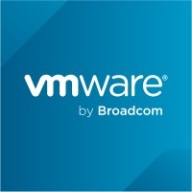

VMware Aria Automation and Nutanix Cloud Manager compete in the cloud management platforms category. Nutanix Cloud Manager seems to have the upper hand in ease of deployment and cost efficiency.
Features: VMware Aria Automation offers comprehensive automation features, supports multiple platforms, and allows for detailed customization. It streamlines complex workflows and supports multitenancy effectively. Nutanix Cloud Manager excels with one-click upgrades, customizable dashboards, and robust automation features. It simplifies VM management with intuitive controls and provides efficient tools for hybrid cloud management.
Room for Improvement: VMware Aria Automation users mention complexity and initial deployment challenges, along with needing better documentation and third-party integration. Nutanix Cloud Manager could improve its documentation and training materials, and there are requests for better VM folder organization and networking features.
Ease of Deployment and Customer Service: VMware Aria Automation is known for robust technical support, yet its initial deployment is complicated. Customer service generally resolves issues efficiently. Nutanix Cloud Manager provides an easier deployment process with user-friendly interfaces but exhibits varying customer service quality across different regions, with some delays reported.
Pricing and ROI: VMware Aria Automation, though an expensive option with complex pricing tiers, offers significant ROI through enhanced productivity and reduced provisioning time. Nutanix Cloud Manager presents a more cost-effective solution with a lower total cost of ownership, flexible pricing, and strong ROI due to streamlined operations, making it a preferred choice for some users.
Anything that reduces bandwidth and reduces the brain work that our teams have to do to maintain systems across all environments is time-saving and cost-saving.
The biggest return on investment for me when using this product is the fast deployment and the rapid integration and migration without impacting our operations during the migration.
Playbooks and automation definitely freed up engineer time. This allows us to focus on other projects and not have to get hands-on, reducing operational costs.
There is a feature that allows you to escalate the call.
The handoff with support and the knowledge of the support engineer is significantly better than experience with other vendors.
Even when a node goes down, it doesn't impact our infrastructure because it gets load-balanced between the available nodes.
We never had major issues to report or request support.
Nutanix Cloud Manager (NCM) scales well.
The key aspects include mix-match hardware and hyper-converged infrastructure, combining compute, storage, and network in a single platform.
Nutanix Cloud Manager (NCM) has not had any issues scaling with the growing needs of my company.
We've never had any downtime related to the Nutanix product itself.
I would rate the stability a nine out of ten.
The stability and reliability of Nutanix Cloud Manager (NCM) have been excellent.
It supports different hardware types without vendor lock-in, which is an advantage over Azure Stack HCI, which may only work with specific vendors such as HP or Dell.
Our primary reason for choosing Nutanix was for mission-critical applications and Kubernetes.
Quick resolution of disconnection issues and errors in plugins is crucial.
It operates for both of my products, however, as a product, it is complicated to integrate and automate with other products.
It's not cheap, but there are savings and return on investment when coming from a non-Nutanix shop.
In comparison, Nutanix's pricing is significantly higher than that of other setups.
While VMware costs depend on ESXi hypervisor pricing, the AHV hypervisor for Nutanix Cloud Manager (NCM) is free.
It's easy to control resources and govern the resources, and it frees up support to focus on other things without having to help developers.
I would approximate the cost savings to be in the 20% to 25% range since we can optimize our resources and avoid the need to purchase more hardware or reuse resources in the infrastructure from one implementation.
The importance of faster outcomes for their environment is significant; for example, when I delivered the Disaster Recovery solution, we included automation for auto-configuration of VMs and resizing of VMs, which replaced many tasks that were previously done manually.
It helps us automate the workflow of creating many VMs and the TensorFlow key method.
We have strong regulations for maintaining compliance and mitigating risks with this product.
| Product | Market Share (%) |
|---|---|
| Nutanix Cloud Manager (NCM) | 3.9% |
| VMware Aria Automation | 7.1% |
| Other | 89.0% |


| Company Size | Count |
|---|---|
| Small Business | 25 |
| Midsize Enterprise | 23 |
| Large Enterprise | 64 |
| Company Size | Count |
|---|---|
| Small Business | 32 |
| Midsize Enterprise | 24 |
| Large Enterprise | 130 |
Nutanix Cloud Manager streamlines hybrid cloud management by offering centralized control, automation, and workload optimization across platforms. It improves operational efficiency while reducing IT management complexity.
Nutanix Cloud Manager is designed for comprehensive hybrid cloud governance, providing tools for virtualization, resource allocation, and compliance. Its features include one-click upgrades, dynamic dashboards, and the seamless automation of tasks through X-Play. Users can efficiently manage virtual machines, ensure secure storage, and enhance productivity with predictive monitoring. Self-service capabilities allow users to reserve resources easily, while central management via Prism Pro and automated reports enhance oversight and decision-making. Challenges include UI simplicity, pricing transparency, and licensing efficiency, with users seeking improvements in VM organization, blueprint customization, and collaborative support for hybrid environments.
What important features define Nutanix Cloud Manager?Nutanix Cloud Manager finds utility in industries requiring robust hybrid cloud strategies like finance, healthcare, and manufacturing. It excels in centralizing management for secure and compliant operations, optimizing workloads, and providing scalable solutions for resource allocation and compliance monitoring, thus enhancing cloud operations in diverse markets.
VMware Aria Automation is a cloud management tool that allows companies to simplify their cloud experience through a modern automation platform. The solution is designed to deliver self-service clouds, multi-cloud automation with governance, and DevOps-based security and infrastructure management. It helps organizations improve IT agility, efficiency, and productivity through its various features.
VMware Aria Automation has multiple use cases that include the following:
VMware Aria Automation Features
VMware Aria Automation has various features that allow users to easily perform operations. Some of the solution's capacities include:
VMware Aria Automation Benefits
VMware Aria Automation offers its users various benefits. Some of the biggest advantages that the solution brings to companies that utilize it include:
Reviews from Real Users
Awais J., CTO/CEO at a tech services company, likes VMware Aria Automation because it saves a lot of time, provides more visibility, and has extensive automation capabilities.
An IT consultant at a government rates VMware Aria Automation highly because the product gives you flexibility to analyze and consume resources.
We monitor all Cloud Management reviews to prevent fraudulent reviews and keep review quality high. We do not post reviews by company employees or direct competitors. We validate each review for authenticity via cross-reference with LinkedIn, and personal follow-up with the reviewer when necessary.